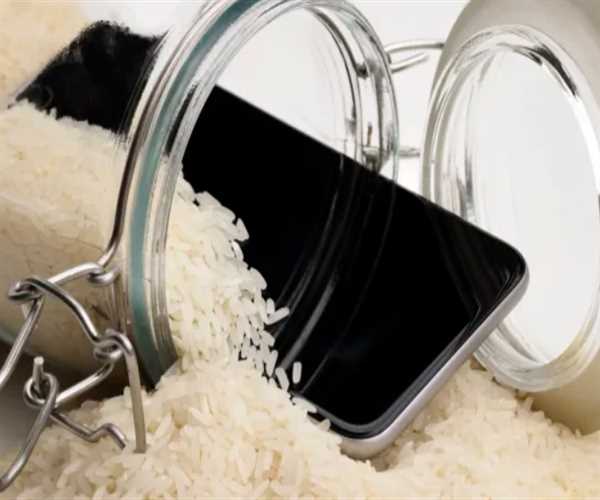Search here

22-Feb-2024 , Updated on 2/22/2024 12:34:12 AM
Stop drying your wet phone in a rice bag, Apple says
For years, drying a wet phone in a bowl of uncooked rice has been a hack that appears to have saved countless handsets. However, in its most recent instructions, Apple has advised iPhone owners to stop using this procedure to repair waterlogged phones, warning that it may cause more harm.
In its most recent advice, Apple addressed what to do if you receive a liquid detection notice on your iPhone. "Do not store your iPhone in a bag of rice. "Doing so may allow small particles of rice to damage your iPhone," Apple cautioned.
The tech titan also advised against using an external heat source, such as hair dryers or compressed air, to blast off fluids. Cotton swabs or paper towels should not be inserted into charging connections, according to the tech giant.
Apple's recommendations provide a few ideas for what customers may do safely if a "liquid detected" message appears on their phones. To drain extra water from your phone, the manufacturer advised tapping it on your hand with the connector pointed down. Then, place it in an area with sufficient ventilation to dry for 30 minutes before charging it. If the alarm still appears, leave the phone for a few minutes and simply wait. It can take up to 24 hours to fully dry, and consumers may notice the liquid detection signal during that period, according to the business.
"Although you should not charge your iPhone while it is soaked, maybe you need to in an emergency. If you reconnect your iPhone to the cable or accessory in an emergency, you can get around the liquid detection and charge your iPhone." Apple wrote in its advice.
"You can continue to use your wireless charger to charge your iPhone. "For best results, make sure the back of your iPhone is dry before inserting it on your Qi-certified charger," it said.
Apple also warned that if you charge your iPhone when the lightning or USB-C connector is wet, the pins on the connector or cable could become rusted and cause permanent harm or stop working, leading to connectivity difficulties for your phone or device.
However, customers may not have much to be concerned about when it comes to water damage to their newest iPhones, as Apple offers that its premium handsets can withstand immersion in up to 20 feet of water for 30 minutes.
Myths of Indians in placing phones in rice bags
Placing phones in rice bags has become an increasingly common home treatment for water-damaged gadgets, due to the belief that rice can absorb water and protect devices. This practice, which can be connected back to online discussion boards and stories, is now taking hold in India and worldwide. The belief in its effectiveness comes from the idea that rice, a household necessity, contains hygroscopic qualities that allow it to absorb water from its surroundings.
However, the truth of these actions is much more complicated. While rice can absorb water in specific circumstances, its efficiency in restoring waterlogged phones is questionable at best. In reality, tiny rice particles can become stuck in the device's sensitive parts, causing the damage and complicating repair tasks. Furthermore, rice's moisture-absorbing properties are limited, particularly in situations of extended water exposure.
Despite its great popularity, keeping phones in rice bags is still a myth supported by wishful thinking rather than solid proof. In reality, the most effective course to follow for water-damaged electronics is early and skilled intervention, such as dismantling, drying with desiccants, and carefully repairing by trained experts.
As Indian societies move to the digital era, it is important to clear up misunderstandings about phone maintenance and encourage smart approaches to device care and repair. In an increasingly connected world, users can secure their gadgets and extend their longevity by acknowledging evidence-based solutions and using professional experience.

CONTENT WRITER
Writing is my thing. I enjoy crafting blog posts, articles, and marketing materials that connect with readers. I want to entertain and leave a mark with every piece I create. Teaching English complements my writing work. It helps me understand language better and reach diverse audiences. I love empowering others to communicate confidently.
Join Our Newsletter
Subscribe to our newsletter to receive emails about new views posts, releases and updates.
Copyright 2010 - 2025 MindStick Software Pvt. Ltd. All Rights Reserved Privacy Policy | Terms & Conditions | Cookie Policy